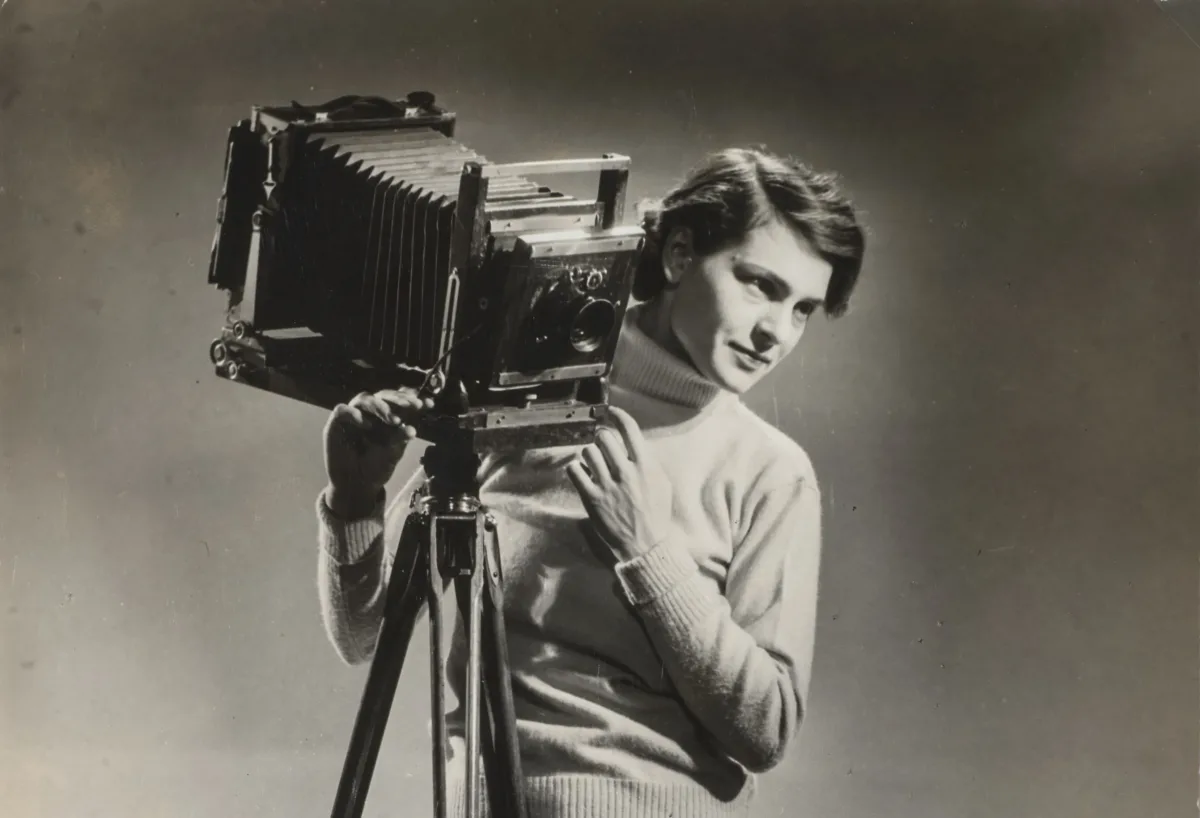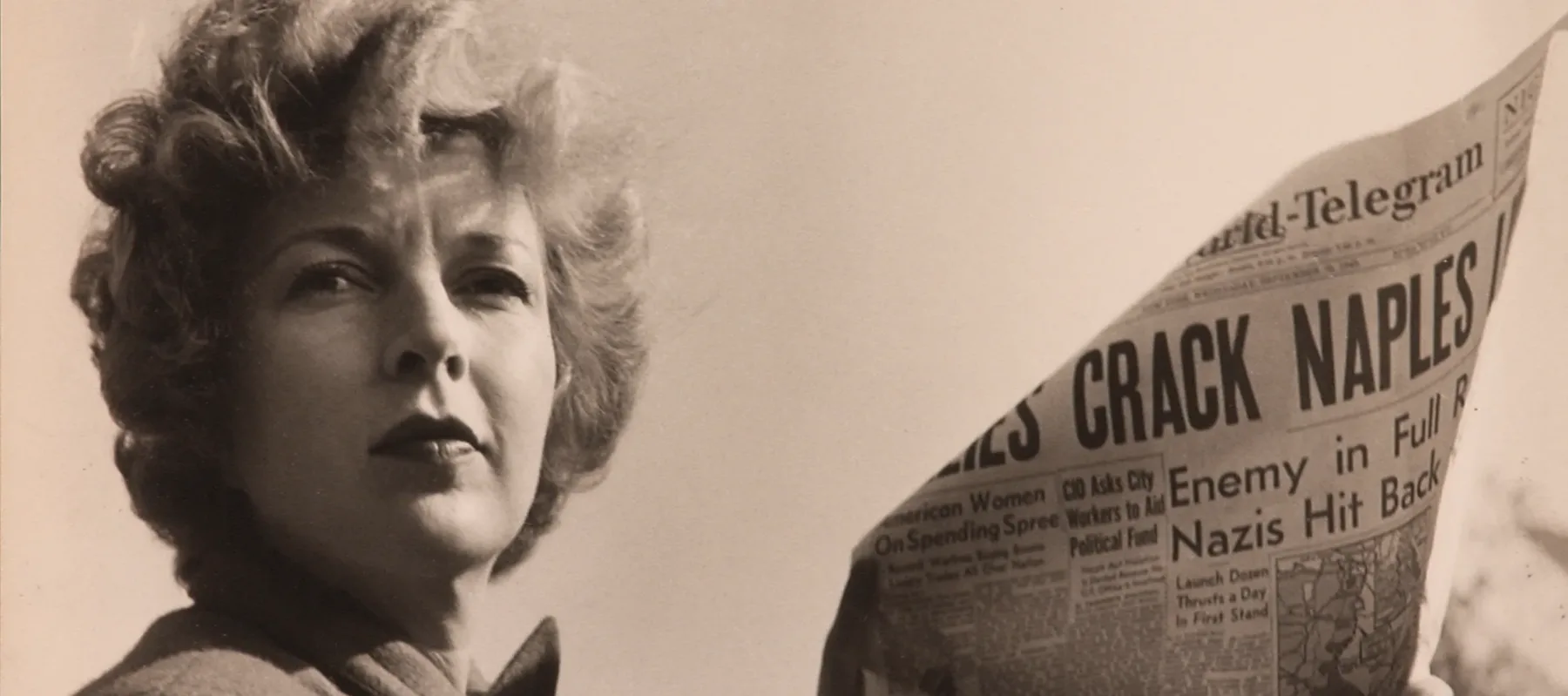NMWA presents Bourke-White: A Retrospective. This extraordinary exhibition contains 150 photographs by Margaret Bourke-White, the first photographer hired by Fortune magazine in 1930 and the photographer who captured the cover and lead story for the maiden issue of Life in 1936. Four years later, U.S. Camera declared, “strange indeed is the fate that has chosen a woman to be the most famous on-the-spot reporter the world over.”
An internationally acclaimed photojournalist and industrial photographer, Margaret Bourke-White (1904-1971) proved that there was no such thing as a “woman’s place.” She was a pioneer in her field, and she always seemed to excel. Whether it was flying on a B-17 bombing mission, surviving a torpedo attack off the coast of North Africa, or scrambling onto the gargoyle of the Chrysler Building, sixty-one stories above Manhattan, Margaret Bourk-White was prepared to do whatever it took to get a first-class photograph.
Born in New York, Bourke-White took her first and only course in photography with Clarence H. White during her freshman year college. In 1927 she graduated from Cornell University and launched her career as an industrial photographer with experimental pictures taken inside the steel mills of Cleveland at the height of America’s romance with the power of industry.
During a thirty-year career that coincided almost exactly with the advent of photography as a major communications tool, Bourke-White covered some of the most momentous events of the 20th century. She was the only photographer in Moscow during the 1941 Nazi invasion and the first woman permitted to photograph an American bombing mission. She documented the horrors at Buchenwald the day after it was liberated and interviewed Gandhi hours before his assassination. As curator Vicki Goldberg writes, “Women everywhere regarded Bourke-White as their ideal.”
This exhibition has assembled photographs from every chapter of Bourke-White’s three decades of celebrated work in photography, from her first photographic ventures in college to vintage prints of her industrial work and examples of her journalistic photography. Many of these images have never been published. Also featured in the exhibition is Bourke-White’s uncommon color work of the 1950s and rare film footage taken in Russia in 1932.

Margaret Bourke-White, Self Portrait with Camera, ca. 1933; Gelatin silver print, 13 5/8 x 9 1/2 in.; National Museum of Women in the Arts, Gift of the collection of Susie Tompkins Buell; © 2023 Estate of Margaret Bourke-White/Licensed by VAGA at Artists Rights Society, New York
